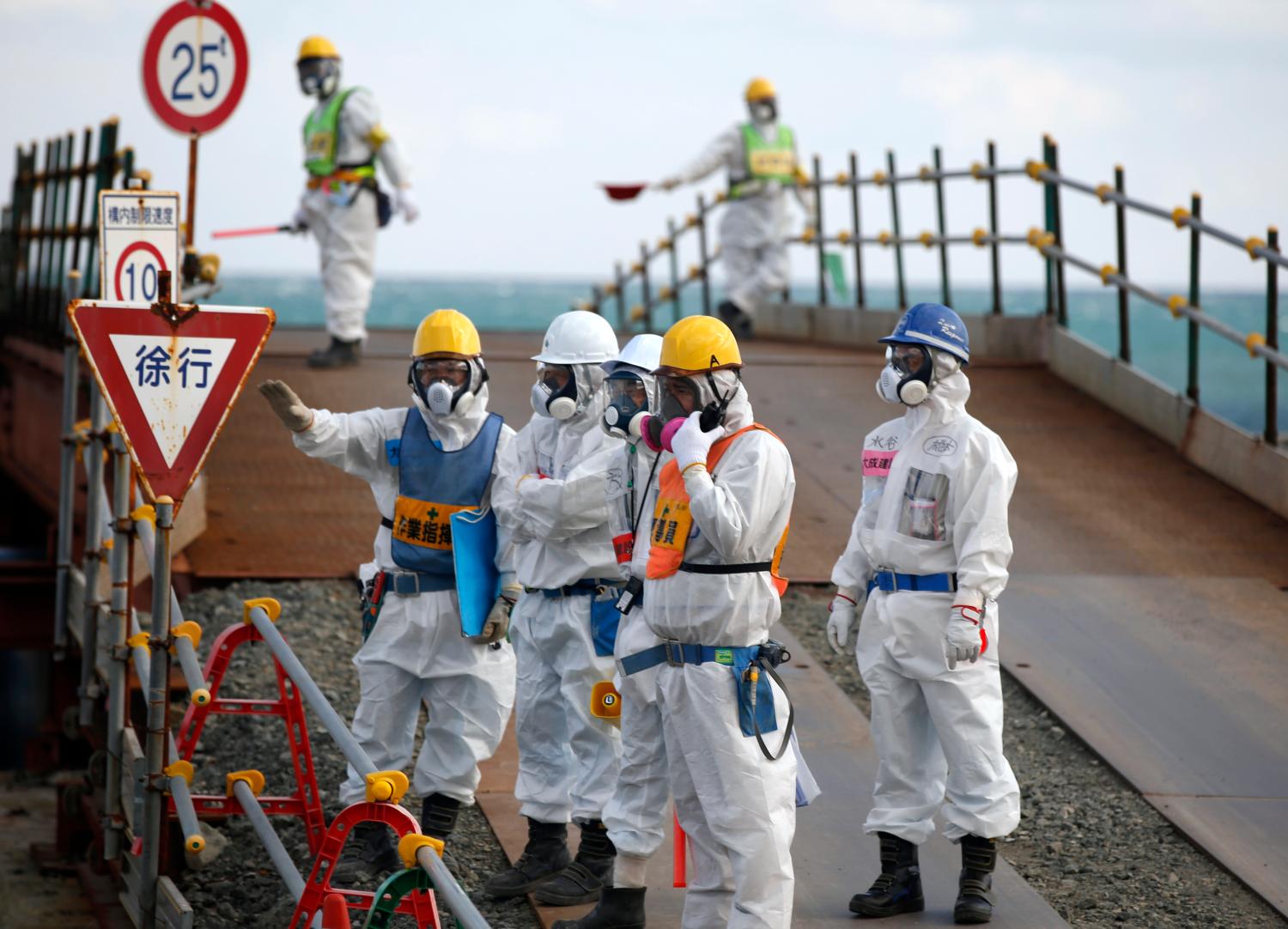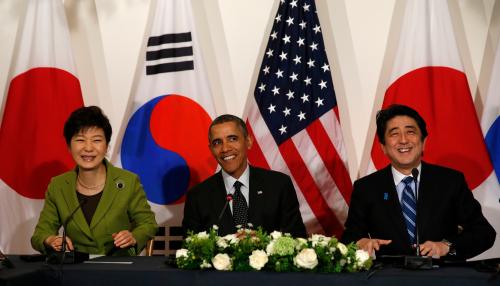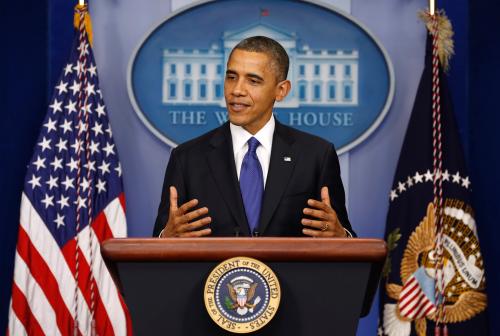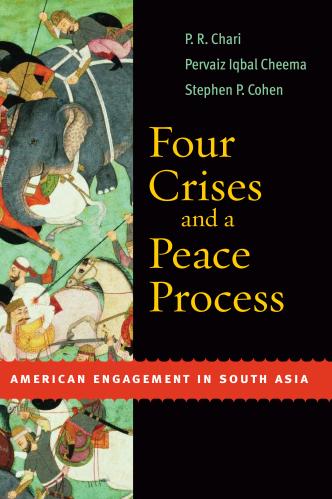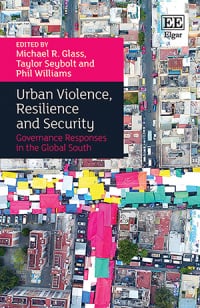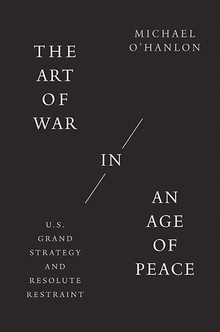In a 1959 speech, John F. Kennedy famously said: “When written in Chinese, the word ‘crisis’ is composed of two characters—one represents danger and one represents opportunity.” Although today it is widely recognized that this is not the correct interpretation of the Chinese characters, President Kennedy’s wisdom about a crisis yielding unique opportunities may be more important than ever.
As national security professionals, we spend our days attempting to predict, prevent, and prepare for potential crises across all domains of national security: from political and economic arenas to military and terrorism ones. Crises are generally viewed as dangerous, expensive, and detracting from other agendas and priorities. However, a look back in history illustrates that crises and extreme threats can be useful for directing individuals, a country, and even the world to a solution. As President Kennedy suggested, out of crises can emerge new and incredible opportunities, particularly if traditional approaches and paradigms are questioned and challenged. During a crisis, incentives and motivations change, potentially leading to new cooperative behaviors and even to the creation of new systems or structures. Crises can get the collective adrenaline flowing, focusing minds to solve the problem at hand.
Benefits of Past Crises
A look back in history quickly reveals numerous ways that crises have offered unexpected benefits for societies, countries, and humanity.
Rapid problem solving and innovation: Plato is credited for coining the phrase “Necessity is the mother of invention,” and often a crisis acts as the forcing mechanism to compel expeditious innovation, leading to rapid advances in technology, policy, and/or procedures.
- Deep Water Horizon: In 2010, the Deep Water Horizon rig exploded and collapsed in the middle of the Gulf of Mexico, unleashing the largest single oil spill in history. This 87-day uncontrolled release of crude oil from the sea floor (over a mile underwater) created an unprecedented problem and an environmental disaster. At the time of the incident, no technology or mechanism existed to contain it. The “Capping Stack” that ultimately brought the release under control—as well as the ability to install it at such great water depth—was developed “on the fly” over a few months. This technology is now incorporated as a contingency for deep water drilling operations across the globe.

Increased resiliency for the next event: The measures taken to survive and eventually end a crisis often make an organization or country stronger and more resilient for future events.
- Asian debt crisis 1997-1998: The Asian financial crisis plunged the affected countries into deep recessions, rapidly increasing unemployment, poverty, and social dislocation. Although devastating for these countries and peoples, especially Indonesia and Thailand, the Asian debt crisis provided valuable financial lessons that would stand Asia in good stead for the global crisis a decade later. Today, many economists agree that the fundamentals of the Asian economies are better than they were in 1997. Among other reforms, Asian economies have built up their foreign exchange reserves as a buffer; most have current account surpluses; and many have allowed their exchange rates to float.
New levels of cooperation—even among rivals: Large scale crises that challenge multiple interests and equities have a way of pulling together diverse partners—allies and rivals alike—to solve the crisis. If nurtured, these relationships then can be parlayed into cooperation in other areas.
- Iraq’s invasion of Kuwait: Iraqi President Saddam Hussein—heavily in debt from his war with Iran—invaded neighboring Kuwait in August 1990, claiming it as his 19th province. Recognizing this as a violation of sovereignty and a challenge to regional allies, the United States under U.N. auspices built and led an unprecedented, multi-national coalition of 32 partners—including the United Kingdom, Russia, Egypt, France, Saudi Arabia, and Syria—to expel Iraqi forces from Kuwait. By January 1991, the coalition had destroyed the Iraqi military, liberated Kuwait, and thwarted Saddam’s aims to bring Israel into the conflict and split the coalition. This hallmark of international cooperation, including between the United States and Russia shortly after the end of the Cold War, stands today as the model for successful coalition operations. Furthermore, the Madrid Peace Conference, following the invasion, laid the groundwork for all Middle East-related peace processes attempted since 1991.
Systemic change: Global crises that crush existing orders and overturn long-held norms, especially extended, large-scale wars, can pave the way for new systems, structures, and values to emerge and take hold. Without such devastation to existing systems and practices, leaders and populations are generally resistant to major changes and to giving up some of their sovereignty to new organizations or rules.
- Thirty Years War: In a Europe torn apart and exhausted by 30 years of religious strife, horrific atrocities, and war, participants negotiated the Peace of Westphalia over five years. Under the terms of the peace settlement, a number of countries received territories or were confirmed in their sovereignty over previously held territories. It also marked the first time complex geopolitical disputes had legal means rather than a default to warfare for conflict resolution. Similarly, the devastation of World War II paved the way for the birth of the United Nations and Bretton Woods institutions, and the 2008 global financial crisis led the major economies to come together to form the G-20.
Dramatic policy shifts: Sometimes the fear generated from a crisis and corresponding public outcry enables and even forces leaders to make bold and often difficult policy moves, even in countries not involved in or affected by the crisis.
- Fukushima meltdown: A massive tsunami hit the northeast coast of Japan in March 2011, causing four of the six nuclear reactors at the Fukushima plant to release radiation into the atmosphere and ocean. Following the Fukushima nuclear disaster, German Chancellor Merkel quickly reversed her position on nuclear energy and surprisingly announced that Germany would gradually shut down all nuclear power plants by 2022. Eight of Germany’s 17 plants were closed almost immediately, and Germany launched a long-term plan to make itself independent of both nuclear energy and coal. By 2016, renewables made up almost 30 percent of Germany’s gross energy production, and nuclear energy as a percentage of gross energy production dropped from about 23 percent in 2010 to 13.1 percent in 2016.
Emergence of talent: A crisis has a way of letting the cream rise to the top. In the midst of a crisis, those with the right skill sets and talent—even if they are not the identified leaders or top performers—have a way of rising to meet the challenge, creating a dynamic that enables the entire team or group to grow closer and work better together.
- The 1999 St. Louis Rams: Pro football player Kurt Warner was cut from the Green Bay Packers in 1994 and took the only job he could, bagging groceries for $5.50/hour at a local store in Iowa. He then spent the next three seasons as an undrafted football player in the B-rated Arena Football and NFL Europe leagues. In 1999, the St. Louis Rams returned from a last place (4-12) finish to start their season in crisis. Their starting quarterback, Trent Green, tore his ACL during a pre-season game, and they were looking down the barrel of another disastrous season. Newly-minted, second-string quarterback Kurt Warner answered the call that season, throwing for 4,353 yards, 41 touchdown passes, and winning 13 games. Then he won the Super Bowl by attempting 45 passes without an interception and throwing two touchdowns for a record 414 yards. Kurt Warner went from supermarket to Super Bowl MVP, and the Rams, a mediocre team at best, coalesced around their unexpected leader to rise to the challenge and beat the odds to transform into world champions.
- The American Civil War: Ulysses S. Grant had an unremarkable childhood and mediocre start to his career, showing little promise while at West Point and then repeatedly failing in various business ventures and at farming. He lost significant money (and at one point his house), and had a reputation for bouts of drinking. When the Civil War broke out, he returned to the military, won the Union’s first major victory at Fort Donelson, and then captured the city of Vicksburg, Mississippi, breaking the Confederacy’s stranglehold on the Mississippi River. After numerous generals failed to turn the tide of the war, President Lincoln appointed Grant to be commander of all U.S. armies, and Grant’s creative, diversionary tactics and aggressive, relentless strategy won the war. Reflecting on Grant’s career, President Eisenhower said: “He had so many disadvantages going into the 1864 campaign…but he rose to the occasion unlike I’ve ever seen in American history.” And “he (Grant) alone had the determination, foresight, and wisdom” to win.
Preparing for the Crisis
To be positioned to respond to a crisis and hopefully turn it into an opportunity for growth and positive change, large and often rigid bureaucracies—such as governments and international corporations—can take several steps ahead of time.
Study and analyze previous crises: Lessons-learned exercises help organizations see what has and has not worked during earlier periods of crisis. Some organizations call it an after-action report while the military calls it a “hot wash.” The actual name is less important than the intended effect: to identify what worked well in the crisis and learn for future use. Otherwise, as Winston Churchill famously said, “Those that fail to learn from history, are doomed to repeat it.” The U.S. intelligence community has utilized such exercises in the wake of the 9/11 attacks and the search for weapons of mass destruction in Iraq to revamp training, create and apply better methodologies, and increase analytic rigor.
Imagine and plan: Structured and unstructured scenario exercises help planners imagine and explore the types of crisis—both unexpected and expected—they could face in the near and long term. Examining the origin, trajectory, and consequences of potential crises during a period of calm gives planners a chance to identify bureaucratic weaknesses, establish protocols, acquire resources and capabilities, and develop various responses, while recognizing that “no plan of operations extends…beyond the first contact.” Even an outline of a plan helps with initial responses in a crisis situation.
Assemble a multi-faceted team or network: To facilitate a rapid response, key players need to know each other and understand each other’s strengths and weaknesses. Getting to know people before a crisis erupts and building relationships help ease personality frictions that would exacerbate the stress of a crisis. It also helps answer the basic question of whom to call across organizations during the immediate crisis response.
Develop communication strategy: Leaders need to pay particular attention to communication strategies—both internally and externally—because words matter, especially during a crisis. Internally, the team or network of people need to have a common lexicon in which to communicate, so that when in crisis mode there is an implicit understanding and agreement that improves efficiency and tamps down stress. In a crisis, if a leader provides what he or she thinks is clear direction, but the team sees as ambiguous, the likelihood of failure becomes significantly higher. Externally, the strategy needs to be focused on managing expectations as well as developing and maintaining public trust. Even successful crisis response can appear to be a failure if the public has lost faith in the system or its leaders.
From Crisis to Opportunity
Once a crisis is in motion, turning it into an opportunity often requires new ways of seeing, thinking, and responding. Applying traditional responses could lessen the pain temporarily, but often is insufficient to solve the underlying problem. Here are a few approaches for getting to a win in a crisis.
Step 1: Define the crisis. The key first step in any crisis is to recognize there is one and not underestimate the severity. The term crisis should not be used casually, because if everything is a crisis, then nothing is a crisis, and such a mentality leads to burnout or delays or ruins resolution. Some crises can easily be defined in advance, while others are a series of events which gradually accrue and lack a clear “this is it” sort of moment. A response team can plan for the obvious crises (e.g. a major terrorist attack, a calamitous natural or man-made disaster, or an accident at a major energy plant), but a crisis that emerges more slowly over a period of time requires responders to stand back to see what is actually happening to know when to call it a crisis.
Step 2: Ask fundamental questions. As the crisis is unfolding, make sure you understand its nature and process. Is it a linear dynamic with a particular trajectory, or perhaps a reinforcing vicious cycle that needs to be broken? Is there a policy or action contributing to the crisis which could be stopped? Are the right people working on the problem, and do they have access to the right information?
Step 3: Reframe the problem. To turn an existing crisis into an opportunity often requires reframing the problem or looking at the issues through a different lens. Reframing could include widening the aperture to see more of the problem. Alternatively, reframing could include bringing in lessons or systems from other domains. For example, medical diagnoses could offer insight for fighting terrorism by using infection patterns of a disease as an analogy for terrorist ideology spreading among a population to identify patient zero or the chief radicalizer.
Step 4: Give permission to fail. Often the solution is not immediately obvious but requires many trials and errors. People are more willing to offer needed creative solutions and unique perspectives in an environment that does not penalize its people for taking risks, and sometimes only after everything else fails do the really creative solutions emerge. This is often seen in conjunction with the next recommendation.
Step 5: Manage the narrative: Leaders need to be able to rise above the “management” of a crisis and lead the perception of the event both internally and externally. Getting sufficient buy-in to try new approaches requires trust and confidence in the capabilities and vision of the leadership. When distrust prevails, a crisis can emerge within a crisis. Better leadership of an event provides more latitude to explore opportunities and innovate. For example, after Hurricane Katrina in 2005, local community respect for and trust in Coast Guard Admiral Thad Allen’s leadership gave him the opportunity to re-vamp salvage operations, when other civilian leaders were unable to rally the communities behind similar approaches.
Applying to Current World Challenges
Several of our most daunting current crises across the globe could benefit from applying aspects of these five steps to help reverse negative forces and promote more positive conditions. There are no obvious, easy, or consensus solutions to these ongoing challenges; thus, the time has come to try to approach them in new ways. New approaches—even on the margins—require challenging deeply held assumptions about how the world works and what are acceptable outcomes. Just providing relief or triaging the situation will not change the underlying causes.
Changing climate could stimulate virtuous cycle. If the pace and degree of climate change increases dramatically, this global crisis has the potential to catalyze a range of new discoveries, structures, and behaviors—from astonishing technological breakthroughs to unseen levels of global cooperation. The key to begin to address this massive crisis and promote a virtuous cycle of behaviors requires leaders across the globe to apply these steps. First and foremost, all major players need to recognize, define, and take ownership of the problem. As the signs of climate change have increased in the past few years, international cooperation to slow the progression and manage the effects already have increased—albeit slowly. At the Paris climate conference (COP21) in December 2015, 195 countries adopted the first-ever universal, legally binding global climate deal, designed to put the world on track to limit global warming below 2 degrees Celsius above pre-industrial levels. The weather fluctuations of the past year could be the driver to push the international community—allies and rivals alike—to finally implement these programs and even go beyond, but government commitment, both here and abroad, remains in question. To get widespread support for difficult policy changes in energy production, agriculture, and consumption, leaders in the public and private sectors have a responsibility to reframe this crisis as everyone’s problem and then develop partnerships to find innovative ways to limit and hopefully, reverse the impact. A modern-day Manhattan project—which concentrated funding, resources, and talent on nuclear weapon development to get ahead of the Germans—could bring the funding and brightest scientific minds together to jump-start creative solutions.
Middle East chaos could promote systemic changes. Multiple scholars have drawn parallels between the Thirty Years War in Europe and today’s long-standing wars and conflicts in the Middle East—a region equally riven by religious, ethnic, tribal, and linguistic differences. As the years of destruction in Europe paved the way for the Peace of Westphalia and the beginning of the modern state system, the last six years of upheaval in the Middle East may be the catalyst which finally enables real, systemic change in the region. However, convincing key decisionmakers inside and outside the region and then launching such a regional revolution may require formally recognizing that parts of the existing regional order have failed and cannot be put back together in their previous form. Moving from collapse to a positive new regional order will require deftly managing the narrative both internally and externally. If such buy-in is achieved, systemic change could take various forms: from major, regional transformation, such as creating more historically authentic state borders or resolving longstanding geopolitical rivalries, to slightly less massive efforts, such as launching a regional initiative for political and economic development.
Millions of refugees could focus attention on root causes. Worldwide refugee numbers—caused by genocide, war, famine, and natural disasters—are at their highest levels in recorded history. From Syria to Myanmar to Haiti to sub-Saharan Africa, millions have been displaced within and across borders. Local and international relief organizations have focused on providing short-term relief services or resettling the refugees in their new locations, but these relief organizations are overwhelmed, and efforts are insufficient to address the humanitarian crises. Moreover, the mounting challenges for host countries are having transformational effects on local economies, societies, and political systems. While addressing the unprecedented humanitarian crisis, international efforts from governments, NGOs, and the private sector need to focus more attention on the origins and ongoing drivers of the refugee flows. For example, in 2015 the Association of Southeast Asian Nations (ASEAN) called for member-state parliamentarians to put Myanmar’s persecution of the Rohingya (minority Muslim) population as a permanent item on future ASEAN agendas, to build better community relations, and to put permanent external monitors in Myanmar to minimize the violence. All these steps are intended to prevent the deliberate persecution of the Rohingya and their flight to neighboring countries from destabilizing Southeast Asia.1 Identifying the root causes of refugee flight in each region and country can enable NGOs and governments to focus on the “push” rather than the “pull” factors for refugees, and addressing causes can often be cheaper than managing the implications for years and decades. Many Palestinians have lived outside their ancestral homes for more than 50 years, supported by host countries and United Nations relief agencies. If current causes of population displacement are not addressed and addressed soon, recent and rapidly increasing refugee groups, likewise, could be surviving on what is likely to be dwindling international assistance for successive generations.
Leadership Remains the Key
Crises are not a prerequisite for innovation or positive change in the world, but major reforms and new paradigms often require the breakdown—generally publicly recognized—of old orders, institutions, and processes. Resolving such crises and charting a more positive trajectory depends in large part on leadership. Leaders are essential to take different and frequently unpopular measures before and during a crisis. Such leaders need courage and humility to first admit the gravity of the challenges at hand and then to develop the apparatus to meet those challenges. Sometimes such crises enable great leaders because the situation changes public mindsets and makes constituents more open and even demanding of change, but in other cases, crises need a leader to step forward and offer a vision and narrative to overcome the challenges. The leader has to take the risk of exploring new, unconventional solutions and dedicate the resources and time to make them happen. The crisis can offer the leader the circumstances and motivation to take great leaps forward, but the leader must grab it. Finding the solutions to our increasingly global and interconnected crises, from terrorism to climate change to refugees, requires this kind of bold and creative leadership.
The authors are paid employees of the U.S. Government (USG) and conducted this research under a USG-funded fellowship at an external institution. All statements of fact, opinion, or analysis are those of the authors and do not reflect the official positions or views of the USG. This does not constitute an official release of USG information. Nothing in the contents should be construed as asserting or implying USG authentication of information or endorsement of the authors’ views. This material may reflect USG-required edits for classification and compliance with legal obligations.
-
Footnotes
- Azeem Ibrahim. The Rohingyas: Inside Myanmar’s Hidden Genocide. 2016. C. Hurst & Co., London UK. P 124-125.

